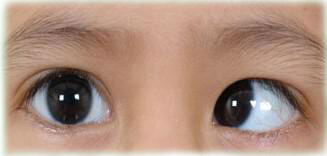Squint or strabismus surgery is performed on extra ocular muscles to correct eye misalignment.
A squint or Strabismus, which affects one in 20 children, is a common eye condition in which the eyes are pointing in different directions, instead of moving and focusing together in the same direction. Squints typically develop before the patient reaches five years old, but there are also cases when the condition develops later in life.

Symptoms of a squint can easily be observed. One of the patient’s eyes might turn outwards, inwards, downwards, or upwards, while the other eye looks forward. However, it is important to note that not all squints are constant—there might be instances when the eyes look normal. Minor squints are not obvious and might be misdiagnosed as another condition.
Specialized testings such as forced ductions, force generation, and saccadic velocities can distinguish excessive scarring, lost or slipped muscles, and fat adherence. Pupillary reactions are also assessed and a dilated exam performed to determine the presence of other retinal or vitreal problems that may require additional treatment. Based on the diagnosis, the condition can be managed with optical treatments, (such as a change in refraction), medical treatment (which may involve the use of corticosteroids and anti-inflammatory medications) and surgical treatment (which may involve the release of scar tissue, excisional biopsies, and treatment of retinovitreal disorders).
Possible Risks and Complications
Squint surgery has various risks and complications although most of them rarely occur. These include:
- Double vision, which usually goes away a week after the procedure
- Eye infection
- Excessive bleeding
- Perforation of the eye and nearby structures
- Change in refraction, which is managed through optical therapy
- Allergic reaction to the anaesthetic, suture material, or post-operative medications
- Conjunctival scarring
- Anterior segment ischemia, which occurs when the procedure resulted in impaired blood flow to the anterior segment
- Ptosis on the vertical rectus muscles

Post a comment